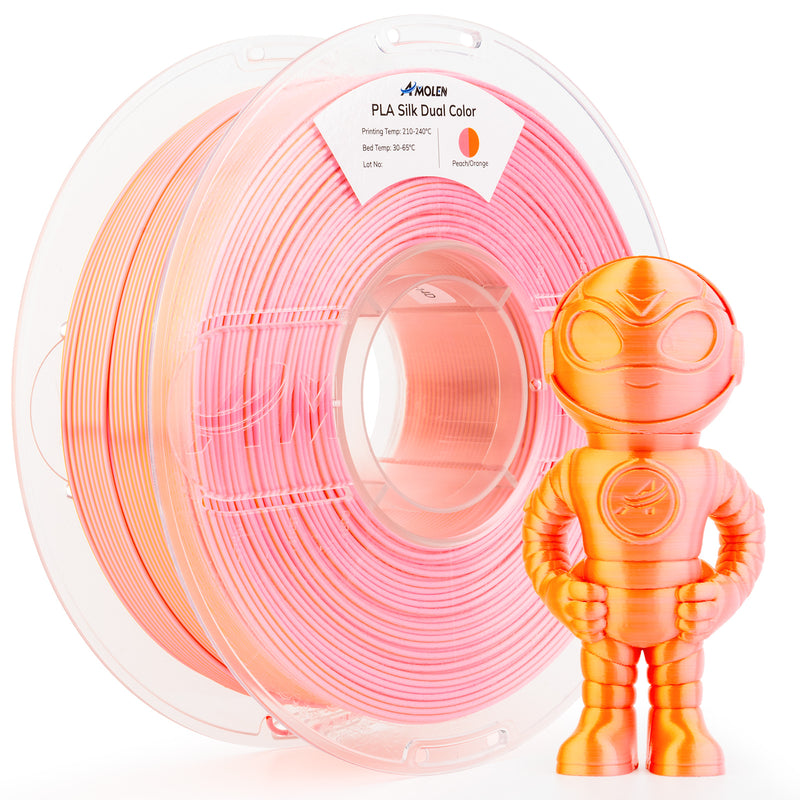Unlock Your Creativity: Discover the Best 3D Printer Filaments You Never Knew You Needed!
Choosing the right 3D printer filament is crucial for bringing your creative visions to life. With the vast array of filament types available, each offering unique properties and characteristics, the impact on your project's outcome can be significant. Whether you are a hobbyist crafting intricate designs or a professional looking to produce functional prototypes, understanding filament options can enhance your 3D printing experience. From the ease of use of PLA to the durability of ABS, the right material can make all the difference. As a friend of mine discovered when he switched from standard filaments to specialty ones, the quality and finish of his prints improved dramatically. Let’s delve into the world of 3D printer filaments, explore the different types available, and equip you with the knowledge you need to make informed purchasing decisions online.

Understanding 3D Printer Filaments
At the core of 3D printing technology lie 3D printer filaments, the thermoplastic materials that are heated and extruded to create three-dimensional objects. Filaments come in various materials, each with its own set of characteristics that affect printing performance and the final product's quality. The most common filament types are made from thermoplastics, which can be melted and reshaped without altering their chemical properties. This versatility allows for easy manipulation during the printing process. Understanding the properties of different filaments—such as flexibility, strength, and melting temperature—is essential for selecting the right material for your project. My experience with various filaments has shown that not all filaments are created equal; some may require more precise settings, while others are more forgiving. This knowledge not only enhances your printing outcomes but also saves time and resources in the long run.
Types of 3D Printer Filaments
The variety of 3D printer filaments available can be overwhelming but understanding the most common types can streamline the selection process. PLA (Polylactic Acid) is one of the most popular filaments, known for its ease of use and biodegradable properties. It’s an excellent choice for beginners and is often used for creating prototypes and decorative items. ABS (Acrylonitrile Butadiene Styrene) offers greater durability and heat resistance, making it suitable for functional parts like housings and toys. PETG (Polyethylene Terephthalate Glycol) combines the best features of PLA and ABS, providing strength and flexibility while being easy to print. Each filament type comes with its advantages and ideal use cases; for instance, my friend once created a functional tool holder with ABS, which stood up to daily use much better than his previous PLA prints. Exploring these materials can help tailor your projects to meet specific needs.
Specialty Filaments
Beyond the common types, specialty filaments have gained popularity for their unique properties and innovative uses. Flexible filaments, such as TPU (Thermoplastic Polyurethane), allow for the creation of pliable objects, perfect for items like phone cases and gaskets. Composite filaments, infused with materials like wood or metal, can produce stunning visual effects and textures, ideal for artistic projects. Biodegradable options are also emerging in the market, appealing to environmentally conscious creators. The versatility of these specialty filaments inspires creativity and expands the range of potential applications. A friend of mine recently experimented with wood-infused filament to create a beautiful decorative piece that not only looked stunning but also felt like real wood!
Factors to Consider When Buying Filaments Online
When purchasing 3D printer filaments online, several critical factors should guide your decision. First, ensure compatibility with your printer. Not all printers can handle every filament type, so check your printer's specifications. Quality is another crucial aspect; look for reviews and ratings to gauge the filament's performance. User feedback can provide insights into issues like clogs or inconsistent extrusion. Additionally, consider the diameter of the filament, typically available in 1.75mm or 2.85mm, as this affects compatibility with your 3D printer. My personal experience has shown that opting for higher-quality filaments resulted in fewer failed prints and a smoother printing process. Don't forget to check the seller's reputation and customer service, as these can impact your overall shopping experience.
Where to Buy 3D Printer Filaments Online
Finding reputable online retailers for 3D printer filaments can make a significant difference in your purchasing experience. Look for suppliers that specialize in 3D printing materials, as they are more likely to offer a diverse selection and high-quality products. Pay attention to customer service ratings, as responsive support can be invaluable if you encounter issues with your order. Shipping options and return policies are also essential; some retailers offer free shipping on orders over a certain amount, which can save you money. A friend of mine had a great experience with an online retailer that provided fast shipping and a hassle-free return process, ensuring he could easily exchange a filament that didn’t meet his expectations. Taking the time to research and compare options can lead to a more satisfying shopping experience.
Final Thoughts on Choosing 3D Printer Filaments
In conclusion, selecting the right 3D printer filament is a critical step toward achieving successful and creative printing results. With various types available, each suited for specific applications, understanding their characteristics can help you make informed choices. Whether you opt for standard filaments like PLA and ABS or venture into the world of specialty options, the right material can unlock endless possibilities for your projects. As you explore the diverse offerings online, remember to consider compatibility, quality, and retailer reputation to enhance your purchasing experience. Embrace your creativity and start experimenting with different filaments to discover the incredible outcomes they can bring to your 3D printing journey!








